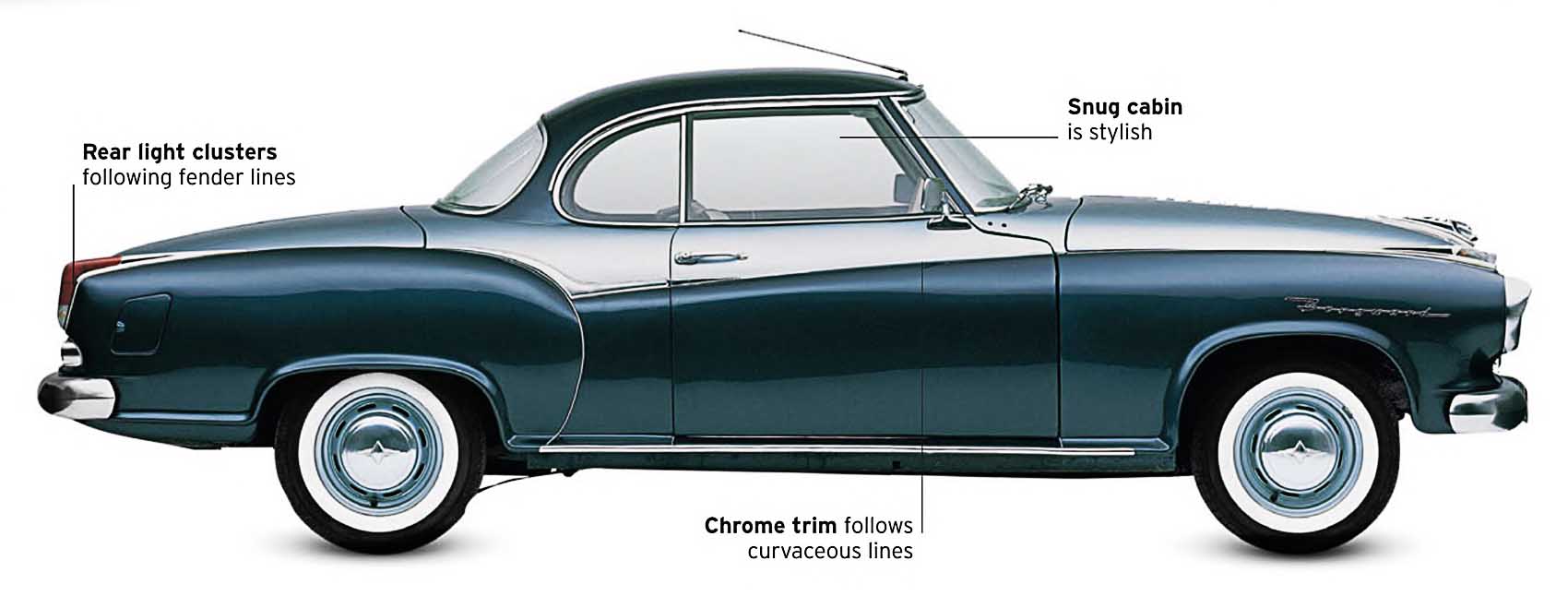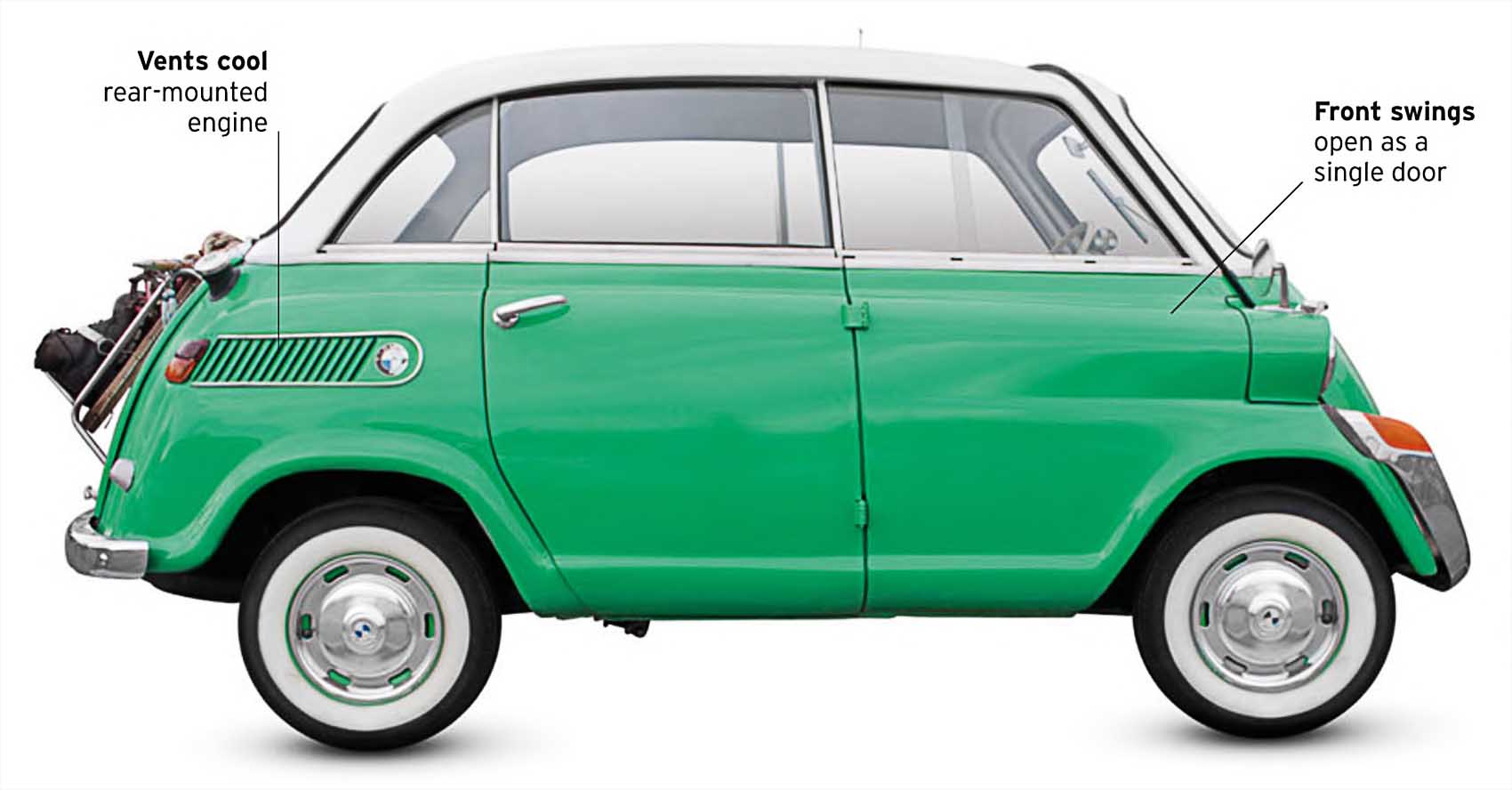
German Engineering
For a nation so recently devastated by wartime bombardment, Germany’s automotive resurgence in the 1950s was impressive. The resurrection of the Volkswagen project, and the methodical rebuilding of the Mercedes-Benz, Opel, and German Ford marques, laid the foundations for the mighty German car industry we know today. But there was ingenuity and design innovation to be found elsewhere—from the tiny economy cars of Zündapp and BMW, to the excitement of Porsche on road and track, the return of DKW, and even the emergence of Borgward as a mainstream car-maker. Germany was mobilizing again, only this time in peace and positivity.
Zündapp Janus, 1957

| Origin | Germany |
| Engine | 245 cc, single-cylinder |
| Top speed | 50 mph (80 km/h) |
Developed by former aircraft company Dornier, and manufactured for just two years by the Zündapp motorcycle firm, the Janus was meant to be a cut above other “bubble” cars, with back-to-back seating and doors at each end.

Hood not required
Zundapp’s own single-cylinder, air-cooled engine was positioned centrally behind the seats, driving the rear wheels. This kept length to a minimum, while at the same time provided a notably spacious cabin.

View out the back
Rear-seat passengers faced the following traffic; indeed, the car’s “front-back” design was named after the two-faced, Roman God, Janus. It was a comfortable ride, thanks to MacPherson strut suspension all round.
Porsche 550 Spyder, 1953

| Origin | Germany |
| Engine | 1,498 cc, flat-four |
| Top speed | 136 mph (219 km/h) |
When Porsche designed a new engine with double overhead camshafts on each side for its 550 racer, it became a highly effective competition car. The model was made famous by the death of actor James Dean in 1955.
DKW Sonderklasse, 1953

| Origin | Germany |
| Engine | 896 cc, straight-three |
| Top speed | 75 mph (121 km/h) |
With its light, air-cooled, two-stroke engine and aerodynamic styling, the DKW was faster than its small engine size suggested. Its interior space was large, growing a further 4 in (10 cm) in 1955 with the launch of the four-door version.
Borgward Isabella TS Coupe, 1954

| Origin | Germany |
| Engine | 1,493 cc, straight-four |
| Top speed | 93 mph (150 km/h) |
The Isabella sold over 200,000 examples in seven years in saloon, estate, this coupe and rare convertible forms. It was a fine-handling, responsive car, but this family company from Bremen folded in 1961.
BMW 600, 1957

| Origin | Germany |
| Engine | 582 cc, flat-twin |
| Top speed | 62 mph (100 km/h) |
This was an enlarged variation of the Isetta microcar, featuring a larger engine from a flat-twin BMW motorbike. The independent rear suspension was quite sophisticated, but the car did not sell well, and was on sale for only two years.
It is a quote. The Classic Car Book – The Definitive Visual History 2016




